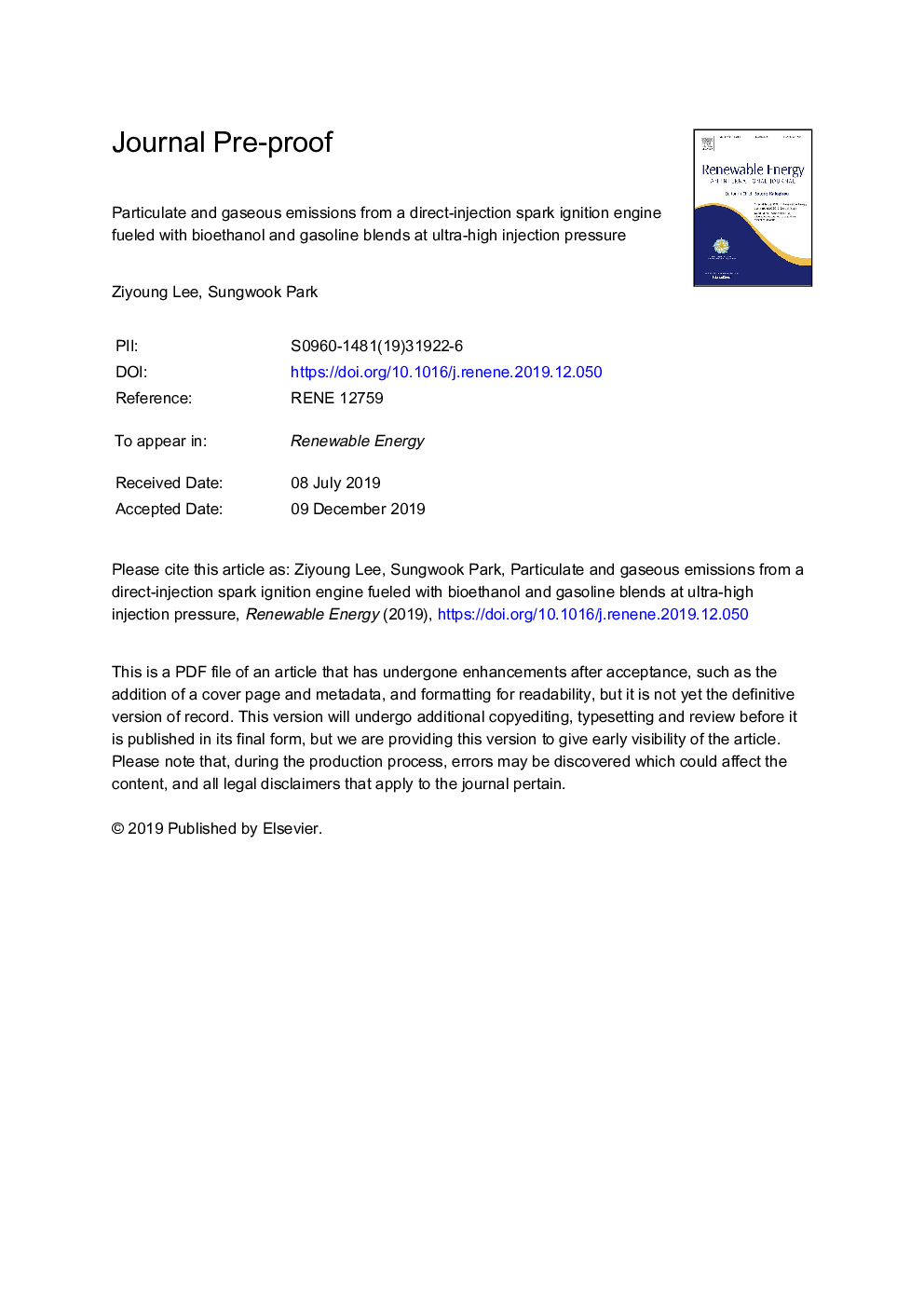| Article ID | Journal | Published Year | Pages | File Type |
|---|---|---|---|---|
| 13422249 | Renewable Energy | 2020 | 44 Pages |
Abstract
In this study, the effects of bioethanol mixing with gasoline on the emission of particulates and gaseous emissions at ultra-high pressure injection up to 50Â MPa were investigated in a gasoline direct-injection (GDI) engine. A 398Â cc single-cylinder engine fueled with bioethanol blends was used for the experiment. The gaseous emission was measured by an emission bench, and particle number (PN) was counted by a PPS-M device. Experiments were carried out under the conditions of maximum injection pressure of 50Â MPa and constant intake flow rate with various injection conditions. Gasoline and bioethanol-blended fuel was used, with the blending ratio varied from 10% to 50% by volume. The results indicated that, as the injection pressure and bioethanol content increased, the PN decreased by 93.6% and 78.9%, respectively. PN emission is proportional to bioethanol contents in case of PN emitted from wall film. Effect of bioethanol addition with ultra-high pressure injection over 35Â MPa is not significant on PN, since atomization enhancement due to the increased injection pressure is saturated. Total hydrocarbon and nitrogen oxide emissions decreased up to 34.5% and 35.6% with increasing oxygenated fuel, bioethanol, contents at ultra-high pressure injection over 35Â MPa and were remarkably influenced by injection timing.
Related Topics
Physical Sciences and Engineering
Energy
Renewable Energy, Sustainability and the Environment
Authors
Ziyoung Lee, Sungwook Park,
